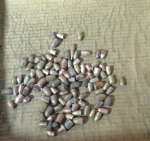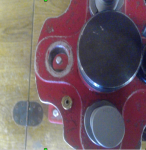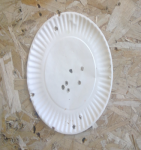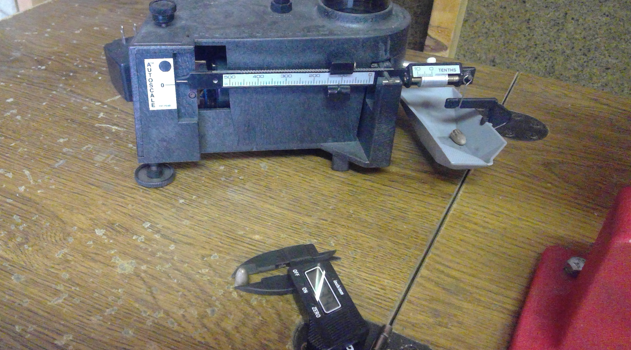My father grew up poor on a barren Wyoming homestead 8,200 feet above sea level. A World War 2 veteran and policeman, he and my mother were very frugal — not stingy or cheap but careful with what assets they had. My earliest memories of my father were of him teaching me to shoot and hunt cottontails with a Winchester Model 62 pump-action .22 rifle, which I still have. I was so young he had to hold the barrel steady as I could barely lift the rifle. He was not one to waste ammunition. Throughout my young pre-teen years, my best friend and I spent many happy hours plinking with our .22 rimfires.
Later on, in my teens after acquiring centerfire firearms I got into reloading with the classic Lee loader. This little handloader made affordable shooting possible. Now, nearly fifty years later and recently retired I have found time to reload all the empty brass that has been accumulating in the garage. It has been more than a little frustrating trying to find the components needed, especially Boxer primers. Recently, I was on a friend’s property when his one-time neighbor and ten-year-old daughter stopped by to visit. As avid shooters, they had been at a nearby range.
The girl showed us all the spent cartridge cases they had collected. I pointed out that the aluminum ones were not reloadable. Her father laughed and said; ‘’I don’t reload the cases; I reload the primers.’’ This got my attention. ‘’How do you do that?’’ I asked. He explained that he ordered a primer reloading compound called PRIME-ALL from an outfit called Sharpshooter22. I had heard of people using strike anywhere match heads or cap gun caps to reload primers with varying degrees of success, but hadn’t realized there was a compound you could purchase. He explained the process and cautioned that the reloaded primers must be loaded still wet into the cases and the acetone allowed to dry before loading propellant and bullet.
Recently, I had heard of a reloader who reused pistol bullets fired into a special trap behind the target. This sent me to wondering in times when ammunition is not available or forbidden… Would it still be possible to reload using scavenged projectiles and reanimated primers?
A Caveat: Before we go any further let me say that I did this so you don’t have to, and in no way do I recommend this. But it is indeed possible to reload primers and reuse previously fired pistol bullets with some caveats.
Within a week the order from 22 Sharpshooter arrived in my Post Office box. The package consisted of a plastic dipper with a large side and a small side, directions and four plastic bags each containing one of the four powders that made up the compound. Evidently, it is legal and safe to ship with the four compositions separated in this way. Nowhere did it say what the four chemicals were. I can speculate that the yellow is a sulfur compound and one of the others is potassium chlorate.
 Time waiting for the package to arrive had been spent collecting projectiles from a spot that has been used by myself and others for decades. Close to our small town and with a large hill as a backstop, perfect for plinking and sighting in rifles. Powdery dirt in the high Wyoming desert and the not uncommon wind made for easy pickings. Mostly 115-grain 9mm, it appeared. Back home I weighed and measured and sorted them into three categories; good, maybe and no way. On further examination, the better ones were sorted into what I half-jokingly labeled “good”, “gooder” and “goodest” containers. (First batch harvested)
Time waiting for the package to arrive had been spent collecting projectiles from a spot that has been used by myself and others for decades. Close to our small town and with a large hill as a backstop, perfect for plinking and sighting in rifles. Powdery dirt in the high Wyoming desert and the not uncommon wind made for easy pickings. Mostly 115-grain 9mm, it appeared. Back home I weighed and measured and sorted them into three categories; good, maybe and no way. On further examination, the better ones were sorted into what I half-jokingly labeled “good”, “gooder” and “goodest” containers. (First batch harvested)
Also, during the wait for the product to arrive several reviews were read, these varied from ‘’Doesn’t work at all.’’ to ‘’Does what it claims.’’ I also watched some YouTube videos where the acetone was mixed with shellac at 6 parts to 1-part percentage. Collecting spent small pistol primers from the pail by my loading bench I separated the anvils from the cups. The dents in the cups were pounded out using a 1/8” pin punch. The cups were tumbled with stainless steel pins and hot soapy water, the anvils washed and tumbled separately.
Following the directions and wearing safety glasses, a small amount of the chemicals was mixed in a glass container using the plastic scoop as a pestle and to stir. The mixture was placed into the clean dry cups, anvils and a drop of the acetone shellac solution added.
A batch of 22 cases were primed and set aside to dry. 24 hours later, I decided to test the primers before loading the cartridge cases. The first seven did not fire, the eighth made a fizzle with a strong sulfur smell and smoke. This was on the 13th of June 2022, the day Yellowstone flooded. I am in the northwest corner of Wyoming not far from Yellowstone and it was raining heavily. The usually dry air was humid, everything was put aside for another day, speculating that more time was needed to dry.
 The next day I tested another 8 cases, 5 fired, 3 were duds. On the third day, I loaded the remaining 6 cases with powder and bullet and drove out to test fire. 2 of the six rounds fired, 4 were duds. Loading the 4 duds back in the magazine 2 fired this time with acceptable accuracy. Back in the shop 50 cases were loaded and left to dry, after 48 hours 50 Franken-rounds were loaded.
The next day I tested another 8 cases, 5 fired, 3 were duds. On the third day, I loaded the remaining 6 cases with powder and bullet and drove out to test fire. 2 of the six rounds fired, 4 were duds. Loading the 4 duds back in the magazine 2 fired this time with acceptable accuracy. Back in the shop 50 cases were loaded and left to dry, after 48 hours 50 Franken-rounds were loaded.
 All were measured and weighed within 1 grain of each other. The powder was 4.5 grains of HP-38. This is my usual mild plinking load. A plunk test was done to make doubly sure that they would feed. I changed pistols from a Glock to my S&W SD9. I had bought a trigger kit for this gun and put the original factory striker spring back on, thinking that the primers just needed to be whacked a little harder. The original striker spring would fire the harder small rifle primers, so if that was the problem this should solve it. 45 of the 50 rounds were fired. 25 were successful and 20 were duds. My usual practice is to stand at the driver’s side rear corner of my truck when firing so that most of the ejected cases would go over my right shoulder and land in the bed. In the truck bed I saw a case with a blown primer.
All were measured and weighed within 1 grain of each other. The powder was 4.5 grains of HP-38. This is my usual mild plinking load. A plunk test was done to make doubly sure that they would feed. I changed pistols from a Glock to my S&W SD9. I had bought a trigger kit for this gun and put the original factory striker spring back on, thinking that the primers just needed to be whacked a little harder. The original striker spring would fire the harder small rifle primers, so if that was the problem this should solve it. 45 of the 50 rounds were fired. 25 were successful and 20 were duds. My usual practice is to stand at the driver’s side rear corner of my truck when firing so that most of the ejected cases would go over my right shoulder and land in the bed. In the truck bed I saw a case with a blown primer.
Further investigation revealed two more blown primers, so I then ended the test. After a couple of days, I thought that perhaps the stronger spring and conventional firing pin of the SD9 might be to blame and the chisel shape of the Glock would possibly be safer. 30 more cases were loaded. 15 were left to dry base up and 15 base down. I was curious if this would make a difference. 48 hours later back at the range 7 of the bases up rounds fired and 9 of the bases down rounds fired. So far little more than a fifty percent success rate, but no more blown primers.
 Two days later I loaded the remaining projectiles that could possibly be used, about half from the pulled duds and about half from the maybe pile, some with a torn copper jacket or severely dented, twenty-two rounds in all. Once again made the short drive out to our unofficial sagebrush range. Slapping a fresh 9 inch paper plate on the backstop with a magic marker dot more or less in the middle twenty-one feet were paced off. Realizing that I had forgotten to do the plunk test, two rounds were found to fail, that left me with twenty. Loading the rounds, one at a time, not surprisingly the good or gooder struck nearer the center. All hit the paper plate but the maybes were on the edge. Part of the poor grouping can probably be attributed to my failings as a marksman, 11 of the 20 fired and hit the plate, although only the ones from the good or gooder group hit near the center.
Two days later I loaded the remaining projectiles that could possibly be used, about half from the pulled duds and about half from the maybe pile, some with a torn copper jacket or severely dented, twenty-two rounds in all. Once again made the short drive out to our unofficial sagebrush range. Slapping a fresh 9 inch paper plate on the backstop with a magic marker dot more or less in the middle twenty-one feet were paced off. Realizing that I had forgotten to do the plunk test, two rounds were found to fail, that left me with twenty. Loading the rounds, one at a time, not surprisingly the good or gooder struck nearer the center. All hit the paper plate but the maybes were on the edge. Part of the poor grouping can probably be attributed to my failings as a marksman, 11 of the 20 fired and hit the plate, although only the ones from the good or gooder group hit near the center.
Separating primer cups and anvils, tumbling the cups with steel pins to clean all the old priming compound out after hammering out the firing pin dents was tedious and I had decided it was not viable for realistic use other than maybe training. However a once fired pistol round in decent shape can give acceptable accuracy and in an end of the world situation could be used. In my Kindle novel Blue Water Hunter, the two heroes find themselves unarmed in Sinaloa Mexico, but manage to obtain a 1911 and an M4 from the bad guys. In real life, unless in your prime with well-practiced disarming skills, attempting this would probably end in disaster so it would be prudent to plan ahead now with quality ammo and components for you and your family’s defense.
All SurvivalBlog readers would probably agree that it is important to be able to source ammunition these days, so not wanting to give up quite yet, I decided that maybe a test with large pistol primers would be more successful. Separating two dozen large pistol primers, pounding out the firing pin dent, and once again cleaning and drying the cups and anvils, twenty were filled with the primer compound. This time in ten of the cups I compressed the priming mixture with the end of a wooden chopstick as before. The other ten were pressed between a fired cartridge case and the primer rest on my ancient Lyman All American turret press.
I had been reluctant to use the leverage of the press, fearful that it would cause the primer to ignite and doubted the extra pressure would make a difference. Loading ten 10mm cartridges with the normal pressure primers and ten with the extra leveraged primers they were set out to dry for 48 hours. Loading then commenced with a mild charge of Hodgdon HS-6 and new 180-grain projectiles. The magazine with the normal seating pressure primers was loaded into my Glock 20. Five of the 10 fired, once again the 50% average. The rounds with the primers loaded with leverage were loaded. The first round fired, the second was a dud then the next eight rounds all fired normally. Nine out of ten. It appeared that the extra pressure exerted in seating the anvil was the secret.
In conclusion, I cannot recommend this for fear of injury, safety glasses were worn throughout the loading process and tests but not knowing what the chemicals are could mean they are possibly hazardous if inhaled, how stable the compound would be over time is unknown and the free time for the tedious procedure required would be better used for other things in a grid down situation. My wife would certainly find more pressing chores for me. In addition, it appears there is only a 90% at best reliability factor, maybe okay for training but you surely wouldn’t want to risk your life with a ten percent probability of failure in a defensive situation.
JWR Adds: It should be emphasized that it is important to only mix and store very small batches of priming compound at a time. With larger batches, an inadvertent detonation would greatly increase the risk to those handling it. Small batches = low to moderate risk. Large batches = High risk and possible loss of fingers and/or eyesight.
Potassium Chlorate is corrosive and you must remember to clean your firearm if you decide at your own risk to experiment with this. Never should the reloaded primer be used twice. It’s obvious that if a factory striker spring could puncture a reloaded primer with a mild load, then attempting to pound out the dent and use the primer once again would be foolhardy.










